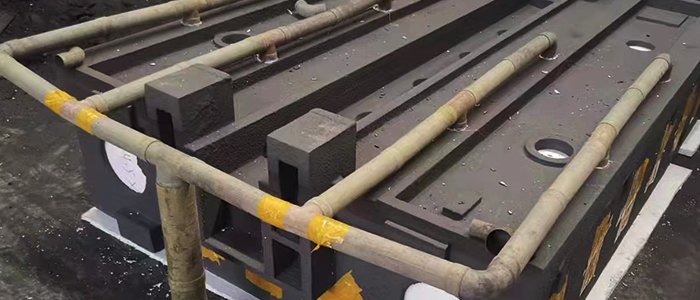The foundry industry is an important sector that plays a significant role in the economy of the European Union. The industry is responsible for the production of metallic components of an array of products used in various sectors, including the automotive, aerospace, construction, energy, and medical sectors. However, the industry is undergoing rapid changes due to advances in technology, environmental concerns, and safety regulations. In this article, we will analyze the foundry industry in the European market, paying particular attention to the application of the paper sprue runner.
Overview of the Foundry Industry in the European Market
According to the European Foundry Industry Association (CAEF), the European Union’s foundry industry generated €49.1 billion in 2019, employing approximately 300,000 people in over 4,000 companies. The industry’s production capacity is approximately 30 million metric tons of castings annually, with the leading castings being iron, steel, and aluminum. The industry is characterized by small and medium-sized enterprises (SMEs), which account for over 90% of the companies. Germany, Italy, France, and Spain are the leading countries in the European foundry industry, with Germany having the largest production capacity of 14.4 million metric tons, followed by Italy at 3.6 million metric tons.
The industry’s growth has been attributed to global demand for castings driven by the expanding economy, population growth, and urbanization. The demand for castings is expected to increase in the next few years, driven by the adoption of lightweight materials, the need for energy-efficient products, and the shift towards electric vehicles.

Challenges Facing the Foundry Industry in Europe
The foundry industry is facing various challenges that need to be addressed for its sustainability. The following are some of the key challenges:
Environmental concerns:
The foundry industry is a significant source of carbon emissions due to its high energy consumption and the use of fossil fuels. The industry needs to adopt cleaner energy sources and recycling of materials to reduce its carbon footprint.
Safety regulations:
Foundry workers are exposed to various hazards in the workplace, such as high temperatures, noise, and chemicals. The industry needs to implement measures to ensure the safety and health of employees.
Technological advances:
The industry needs to keep up with technological advances to remain competitive and relevant. The adoption of Industry 4.0 technologies such as artificial intelligence, the internet of Things (IoT), and robotics can enhance the industry’s productivity and efficiency.
Skills shortage:
The foundry industry is facing a shortage of skilled labor due to the aging workforce and a lack of interest among young people. The industry needs to attract and retain talent through training and development programs.
The Application of Paper Sprue Runner in the Foundry Market
Sprue runners are channels through which molten metal is poured into molds to produce castings. Traditionally, sprue runners were made of sand or wax, which had their advantages and disadvantages. However, in recent years, there has been a growing interest in using paper sprue runners in foundry operations.
Paper sprue runners are made of a composite material consisting of paper pulp, clay, and other additives. The material is molded into the desired shape and size and is used in the foundry operation to connect the pouring basin and the mold cavity. The paper sprue runner system has several advantages over traditional systems, including:
Environmental sustainability:
The paper sprue runner is made of bio-degradable materials, making it an eco-friendly alternative to sand and wax systems.
Cost-effective:
The paper sprue runner is less expensive than traditional systems and can be made in-house, reducing the cost of operation.
Time-saving:
The paper sprue runner system is easy to set up, reducing the time required to produce castings.
Quality control:
The paper sprue runner system ensures uniform casting quality due to its consistent size and shape.
Despite its advantages, the paper sprue runner system has some limitations, including its inability to withstand high temperatures and the need for a drying process after the molding process. However, ongoing research and development are addressing these limitations, making paper sprue runners an attractive option for foundry operations.
Conclusion:
In conclusion, the foundry industry in the European market is an essential sector that plays a vital role in the economy. The industry is facing various challenges, including environmental concerns, safety regulations, technological advances, and a shortage of skilled labor. The adoption of cleaner energy sources, safety measures, technological advances, and talent retention programs can address these challenges. The paper sprue runner system is an innovative alternative to traditional sprue runners, offering environmental sustainability, cost-effectiveness, time-saving, and quality control. The paper sprue runner system is an example of how innovation can address industry challenges while contributing to environmental sustainability.


